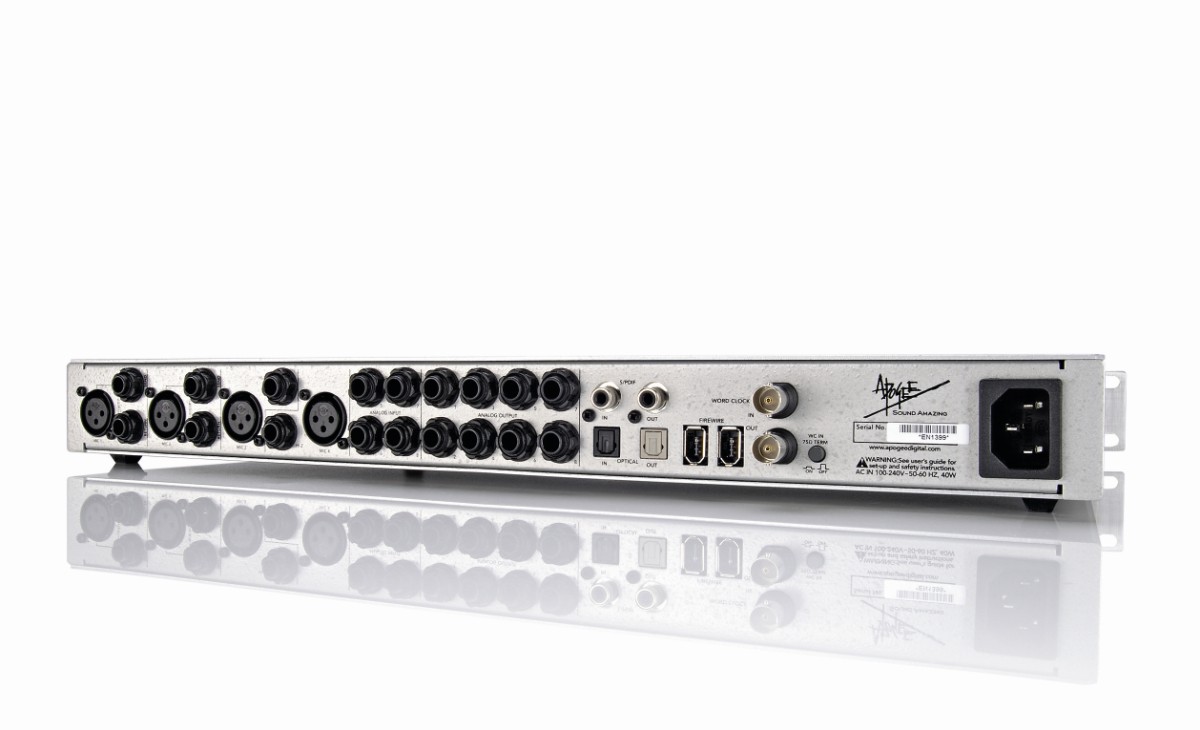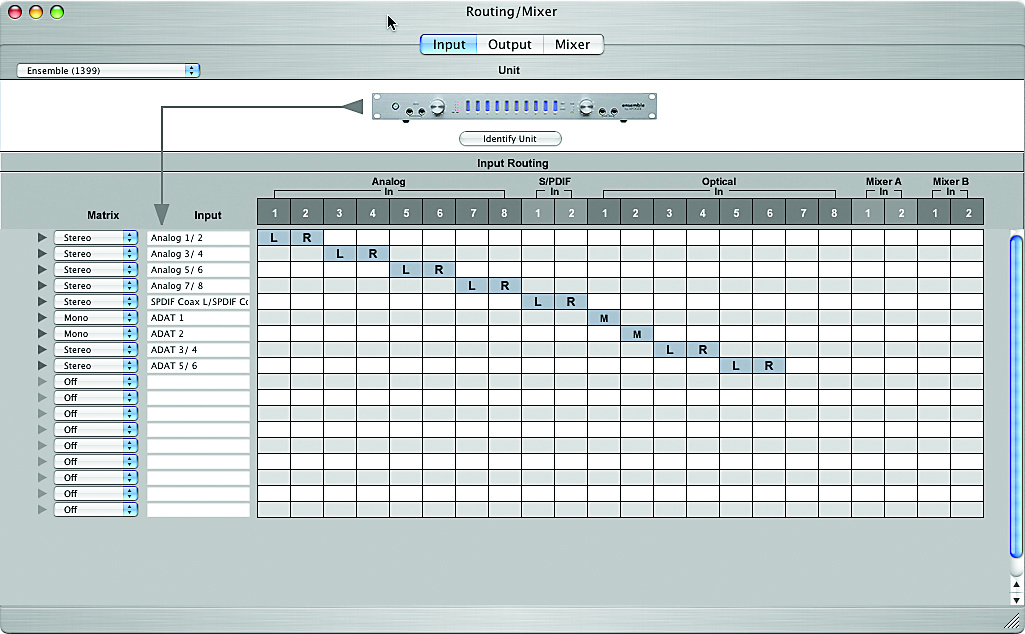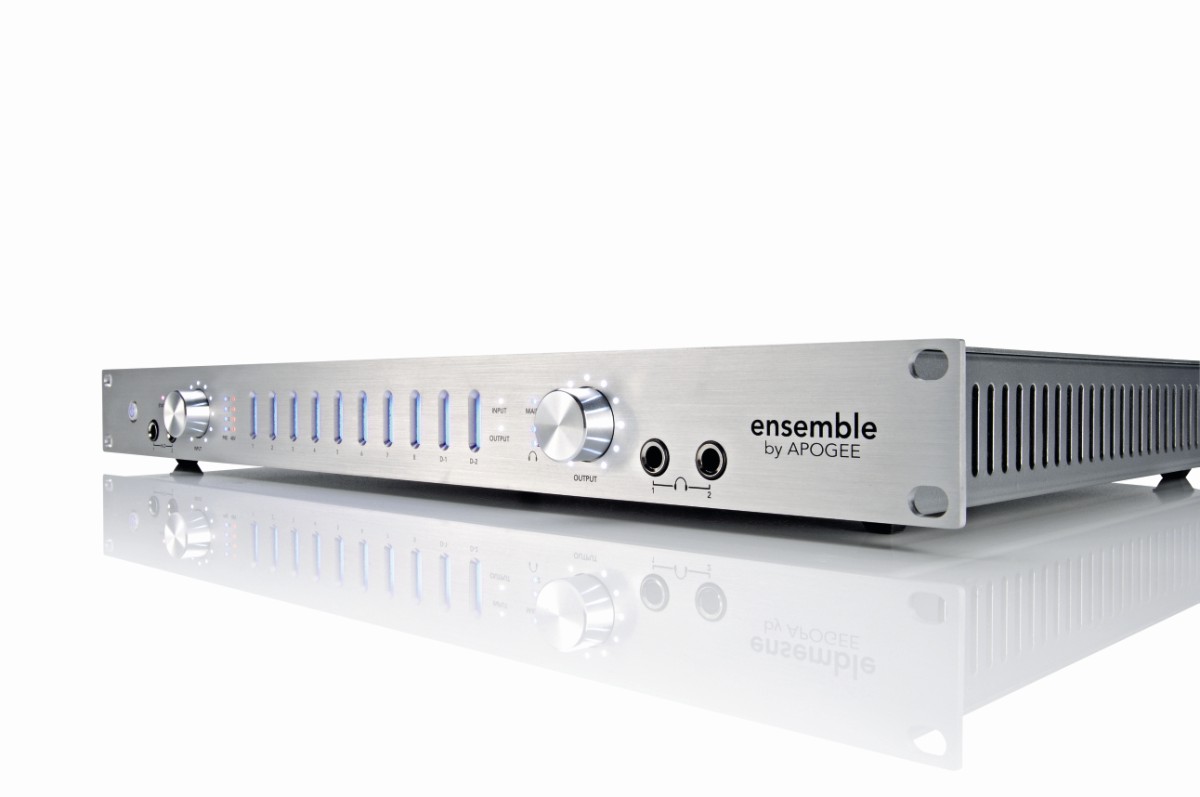MusicRadar Verdict
After a slow start, Apogee´s Logic-integrated interface is beginning to show its truly innovative colours.
Pros
- +
Great FireWire interface. Top quality A/D and D/A converters.
Cons
- -
No PC support.
MusicRadar's got your back



We first heard about the Ensemble about a year ago, so it´s certainly been a bit of a wait. But has it been worth it? The big selling point for the Ensemble has always been its intended integration with Apple Logic, but it´s worth pointing out that it´s also fully Mac OS X compatible (via Core Audio and its Maestro software). On the downside though, it won´t be a PC-supported product...
So what other features are tucked up its sleeve? The most significant is that it´s a completely digitally controlled unit. To elaborate, the two knobs on the front are multi-purpose encoders designed to drive the Maestro or Logic software control panels. It´s a simple enough concept (and one you´ll often see on MIDI controllers), though far less common for interfaces.
Combined with the many spot LEDs there´s plenty of visual feedback, which means you can use it without opening the software control panel (although some features can only be accessed from the software).
The spec
So aside from all the headline-grabbing stuff, what´s the bottom-line spec? First up, it uses FireWire (so installation is simple) and features 36 channels of simultaneous audio (18 in, 18 out). As is often the case for a FireWire interface, this comes as eight channels of analogue, eight ADAT and two S/PDIF.
The backside is packed with connectors, all of which are balanced and (aside from the mic inputs) are on TRS jacks. There are four mic amps/ inputs (digitally controlled from within the software), two of which have pre-converter insert points.
The first four inputs also have high impedance jack inputs (two on the front, two on the back). Inputs five to eight and all eight analogue outputs are on regular TRS jacks.
Want all the hottest music and gear news, reviews, deals, features and more, direct to your inbox? Sign up here.
In addition to the optical and phono digital connectors on the back, you´ll also see word clock ins and outs (with a termination button) and one additional FireWire socket.
Physically, the only other things to spot are the two headphone outs on the front panel and the row of multi-coloured meters.
On the software front, settings can be made via Maestro or if you´re using Logic from within the Apogee Control Panel, it´s in the main ‘audio´ menu.
The graphics may be slightly different, but the settings (mic pre gain, clocking options and so on) are the same in both. There´s nothing to stop these two apps running together, and in use changing settings in one will show up in the other. The big upside to all this software control is that settings can be easily saved and recalled. In Logic they´re automatically saved with the song (but not automatically reloaded), and you simply hit the ‘recall setup from song´ button to get them back.
The one aspect of Ensemble that Maestro deals with exclusively is the hardware routing. With its connection matrix and software mixer you can route inputs to outputs, with level control, mixing in your DAW output too. Great for near zero-latency monitoring.
Sonic delivery
Apogee´s reputation has been built on quality A/D and D/A converters. So with software control making the headlines, it´s easy to forget that the conversion and mic pre element of the Ensemble will be the most important thing for many people.
First up, with plenty of gain (75dB) the Ensemble is great for any low output mics (dynamics and ribbons spring to mind). In use as you increase the gain, initially you´ll hear a relay click in at about 21dB, and if you listen closely you can hear a slight digital noise as you move up. Other options (phantom, phase reverse and the Apogee ‘soft limit´) add tiny noises too. This isn´t a problem, but just as with analogue mic pres, you need to be aware of what you can and can´t adjust on the fly in critical recording situations.
You can tell the converters are top quality. The sound is nowhere near as clinical as you might imagine, offering a smoothness you only get with more pricey gear, and Apogee´s reputation for robust digital clocking no doubt plays a part in this delivery.
Having whacked the gain up considerably to see how much noise the whole front end can generate, it´s good to hear that the Ensemble seems extremely well isolated from the computer. Some FireWire interfaces seem to pick up all sorts of interference. But not Ensemble. This is one of the best we´ve heard.
On the whole you don´t even notice the fact that the software´s controlling the hardware. There were a couple of situations where the knobs didn´t seem to pick up in the right way, but it was only momentary. Functionality issues have been ironed out recently. So after a sluggish start things are looking pretty good for this ground-breaking product.
MusicRadar is the number 1 website for music makers of all kinds, be they guitarists, drummers, keyboard players, djs or producers...
GEAR: We help musicians find the best gear with top-ranking gear round-ups and high- quality, authoritative reviews by a wide team of highly experienced experts.
TIPS: We also provide tuition, from bite-sized tips to advanced work-outs and guidance from recognised musicians and stars.
STARS: We talk to musicians and stars about their creative processes, and the nuts and bolts of their gear and technique. We give fans an insight into the actual craft of music making that no other music website can.
